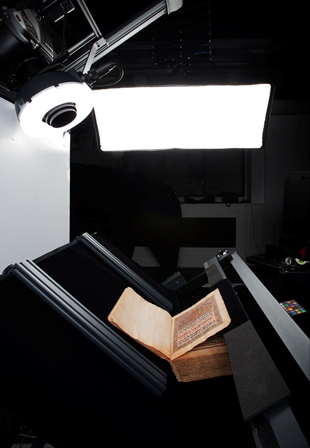When you start out on a digitisation project you need to ask some key questions and the priority of these maybe different for each project. Consider why you are doing this and what will the end goal be. It could be that the content is high use and as such preservation of the original is of the greatest importance or it can be a case of wanting to provide wider access to the content. Whatever your reasons the end platform should be at the front of your mind. User experience of the digital content will be enhanced if feedback is sought from user groups.
A clear selection strategy at the beginning should help identify issues such as copyright that may need clearance before digitisation takes place. Consideration should be given to metadata and the availability of any item records that may already exist and any that require enhancement. Condition of the original items can have a major impact on the throughput of your project, so planning of what is to be done and when will help to keep the project on track. If the material is bound, check the condition of the binding and whether any information is lost in the gutter, this can lead to dis-binding or acceptance of the lost text. If the items are loose then removal of treasury tags for example may be required and a procedure for this should be documented and a decision over who does this activity should take place.

You should decide at the beginning exactly how your content will be captured, so you will need to decide whether you capture the binding and any blank pages within the item. It may be useful to have a contingency of additional content in case any very poor condition material is discovered during the project if a rigorous inspection hasn’t taken place during selection. You may already have surrogates available to mitigate the use of the original item and these should be checked to ensure that they can provide the level of quality required. If you didn’t create the surrogates then you should check that you are able to use them for digitisation.
Consider your technical specification requirements in line with your delivery platform and long term digital preservation. Delivery of large file sizes over your network can have an impact on speed, so you may wish to explore file compression. This should also lead to estimation of required storage space and where and how the subsequent data is managed and who will manage it. Where possible a ‘digital handshake’ should be created between everyone on the project to ensure everyone is seeing the same thing. To this end, agree the colour profile and ensure all monitors are calibrated.

What level of quality control will you apply over the life of the project and what will you check? Verifying the Exit information should be an automated task, however, a visual check of the images will still be required. You may wish to scale back the level of visual inspection over the life of the project as confidence grows, but you should start with a 100 per cent inspection. Ensure that quality control is carried out as soon as possible to enable any re-work that is required is corrected immediately. If carrying out OCR consider if you wish to correct this as part of your quality control. As with all projects, budgets will to some extent dictate how much correction can take place and exactly what percentage of accuracy will be achieved. Decide what your OCR output will be such as PDF, ALTO, Word files etc. All of which will be dependent on your delivery portal.
Look out for forthcoming invites to our new photographic studio and digitisation open days to learn more about the processes involved. In the meantime, whether you have an equipment enquiry, need additional digitisation resources, are considering a new project and need advice on handling the competing demands of conservation and digital access or are just looking for simple advice on how to digitise, Genus will be pleased to assist on 024 7625 4955 or [email protected].





